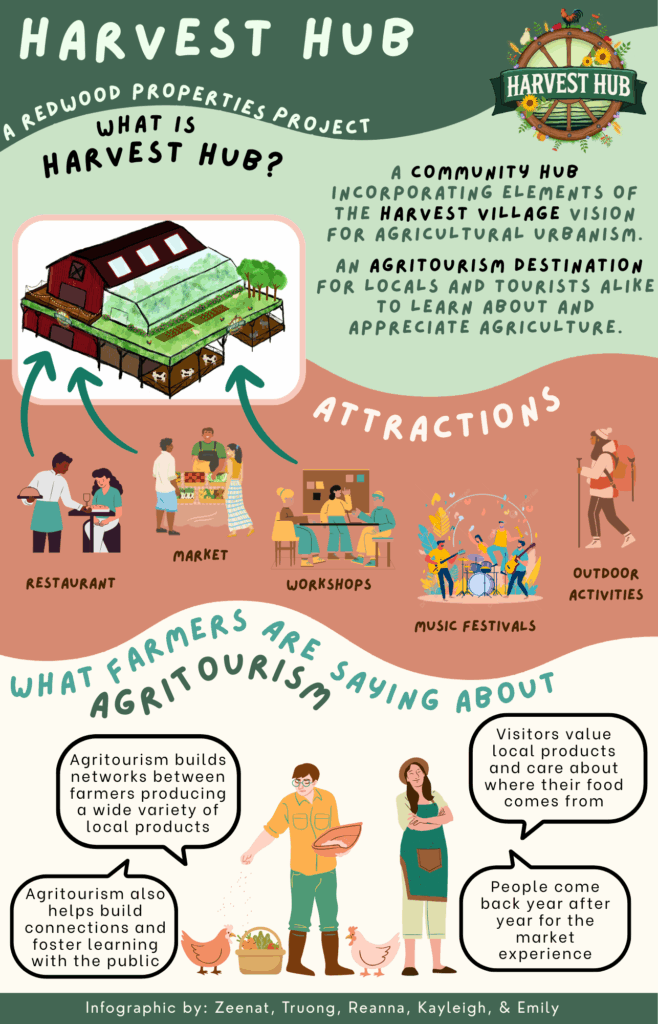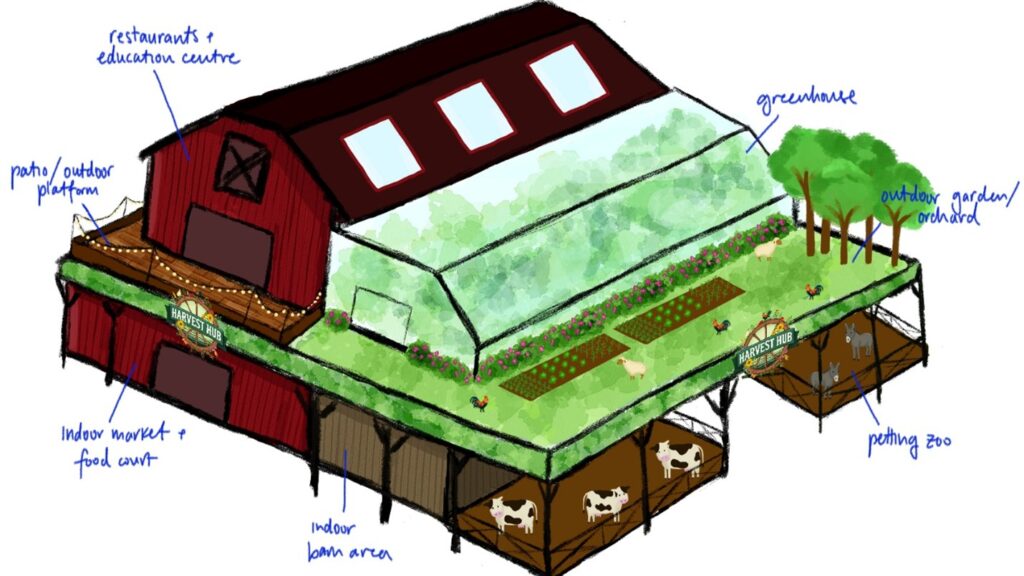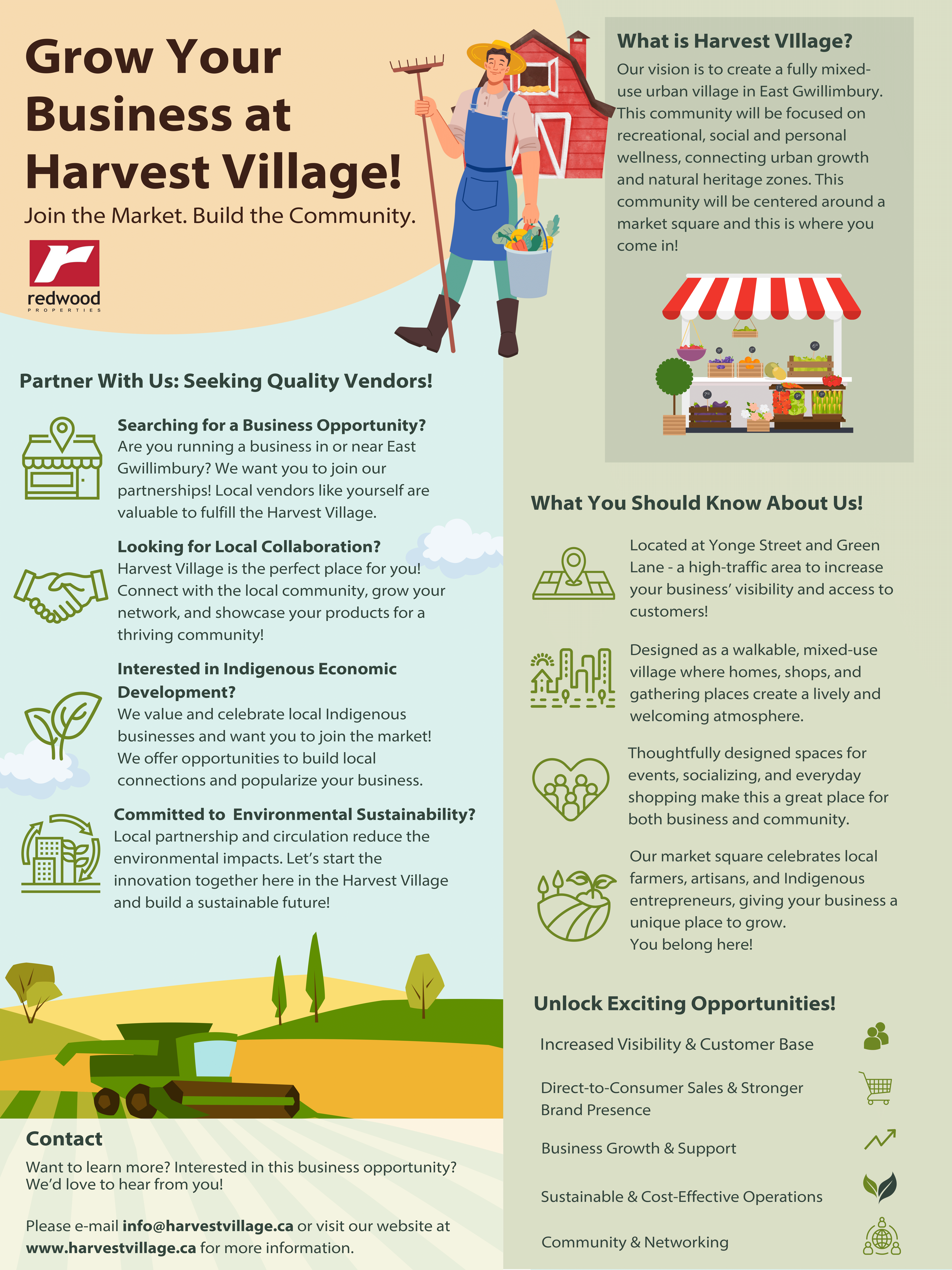(Note: This post is a continuation of our series on highlighting the graduate course UNIV*6050: Innovation and Entrepreneurship in Agri-Food Systems. Click here to read our first post and follow along as we share more about the outcomes.)
A series of previous blog posts have described the work done by students enrolled in the graduate course UNIV*6050: Innovation and Entrepreneurship in Agri-Food Systems. Working with community partner Redwood Properties, teams of students worked to understand best practices and envision a truly regenerative, circular mixed-use community called Harvest Village, which is currently in the planning stages.
Previous blog posts described the work by students on regenerative agriculture practices, as well as regulatory, logistic and funding opportunities for the property. The last two teams of students examined prospects for agritourism on the property and explored collaborative partnership opportunities.
Developing Agritourism Opportunities
As a unique mixed-use development that integrates agriculture, housing and retail uses, Harvest Village has the potential to become a hub of agritourism – drawing visitors who want to learn more about the community and its agricultural practices. The agritourism student team proposed the development of the Harvest Hub – a prototype that could help Redwood Properties explore the potential for agricultural tourism (agritourism) and understand visitor interest and economic feasibility.

Infographic developed by UNIV*6050 students on agritourism opportunities.
Agritourism is a crucial element of Redwood Properties’ plan for the property – important not only because it supports sustainable agriculture, but also because it creates jobs for the local economy, builds networks and relationships between farmers and businesses, and helps to educate people about how their food is grown.
Attractions for Harvest Hub
To understand what works best for agritourism and what draws people to agricultural sites, the students completed a literature review, behavioural insights, and a series of case studies of other agritourism attractions in the region and compiled a series of recommendations for Redwood Properties to consider.
To draw visitors to the site, the student team envisioned a number of activities and attractions for those local to the region as well as occasional visitors, including:
- A daily Farm Market, alongside a restaurant or indoor café for visitors.
- Trail activities, such as hiking, biking, and cross-country skiing in the winter. Guided hikes, outdoor movie nights, equipment rentals and/or an ice rink could be offered as supplementary sources of income.
- A weekly Artisan Market that offers the opportunity for local craftspeople to sell products in winter or summer.
- Occasional attractions could include classes, festivals, school trips, or community events.
- Camping, glamping or yurts – a popular agritourism attraction – could be added for those who may want to spend more time on the property.
Harvest Hub Design
In addition to all of the research done by the team to understand agritourism attractions, the students also developed a prototype of what Harvest Hub could look like. The resulting property includes a petting zoo and indoor barn, farm market and food court, a restaurant and education centre which includes outdoor patio space, and space for growing crops outdoors and in a rooftop greenhouse.

Collaborative Partnerships
Redwood Properties recognizes the importance of collaborative partnerships – not just in enhancing the success of their venture, but also in contributing to the local economy, addressing food justice and food equity concerns, creating opportunities to further mitigate environmental impacts, strengthening relationships and building a community that recognizes co-benefits for all partners.
To enhance the success of the food market, envisioned above, the student teams conducted several case studies of existing food markets, and suggested a number of best practices, including:
- Use vendor storytelling to boost engagement and share more information about individual vendors at the market.
- Support sustainable vendors with marketing grants and green business incentives.
- Develop a shared delivery and storage network; this could reduce costs for vendors, as well as minimize the environmental impact of storage and transport.
- Provide opportunities in the market for non-profit organizations to build connections and reach potential clients.
- To support and bring in Indigenous vendors and vendors from disadvantaged communities, consider low barrier entry fees for these groups, and focus on direct outreach to local businesses, farmers and artisans.

Infographic developed by UNIV*6050 students on collaborative partnerships.
As Harvest Village begins to reach out to potential vendors and build their farm market, there may be opportunities to test business ideas using pop-up stalls or a seasonal market as a pilot project. The student team also developed a ‘rolodex’ for Redwood Properties – a listing of local businesses that could be potential partners.
Building relationships and reaching out to local businesses takes time. Redwood Properties needs to build trust and awareness within their community and share their goals and aspirations for the property, and test potential collaborations to ensure they are beneficial for all parties.
Interested in learning more about the work undertaken by student groups in this course? Read more about the work of the other groups in previous posts in this series.
Interested in education opportunities at AFI? Check out our educational programming at arrellfoodinstitute.ca/education or reach out to afieducation@uoguelph.ca with an expression of interest.